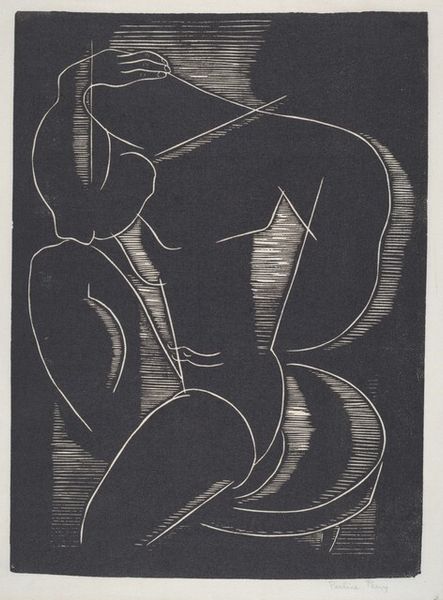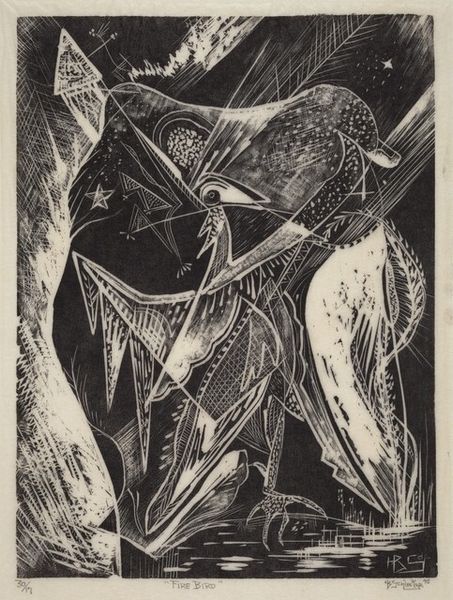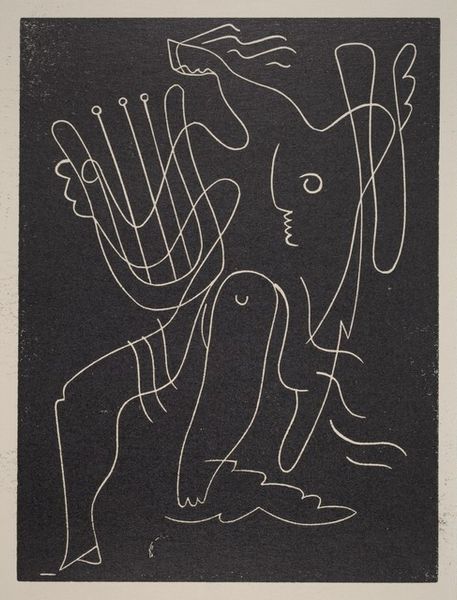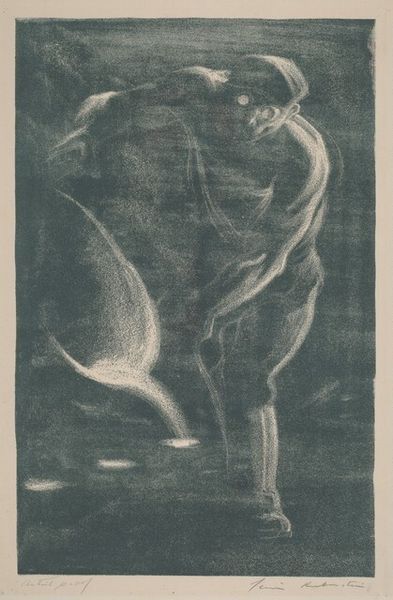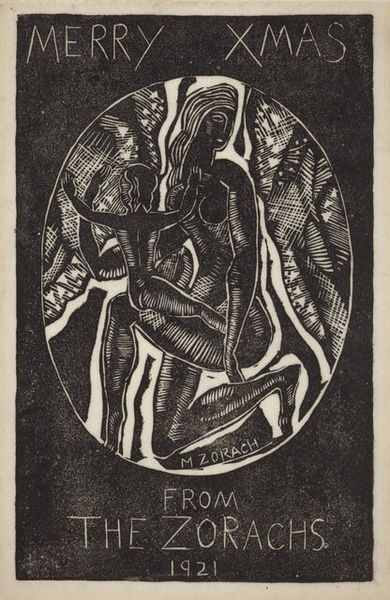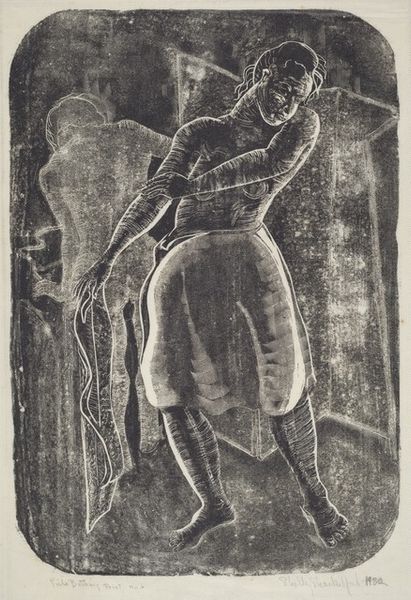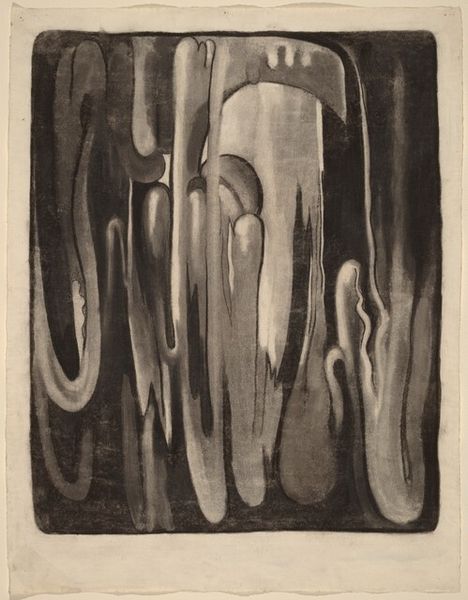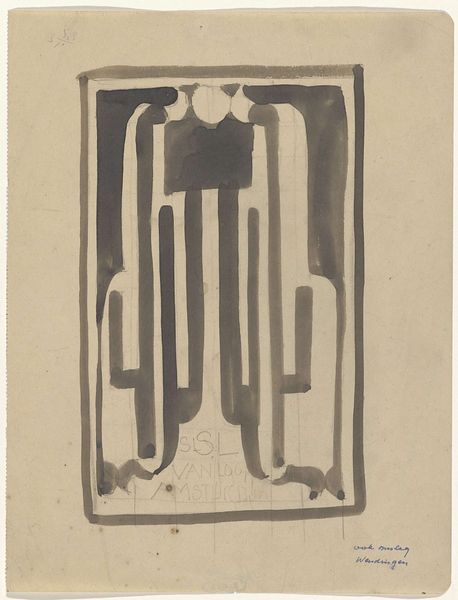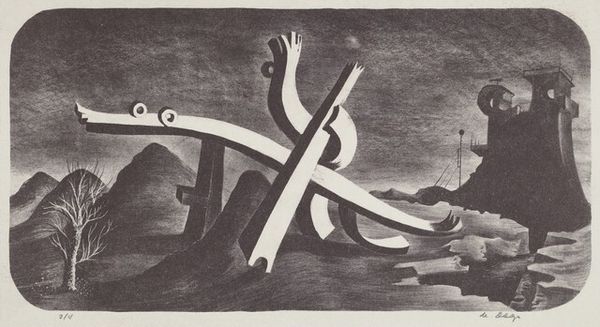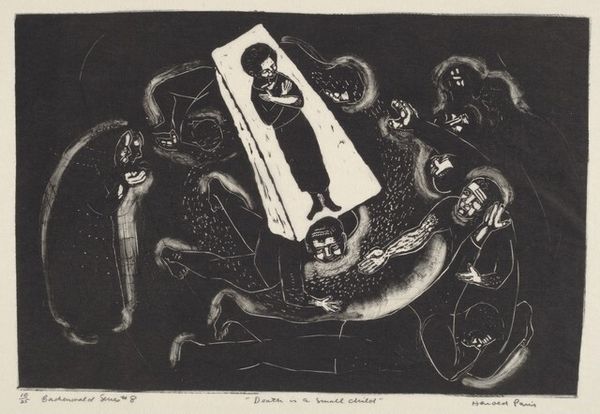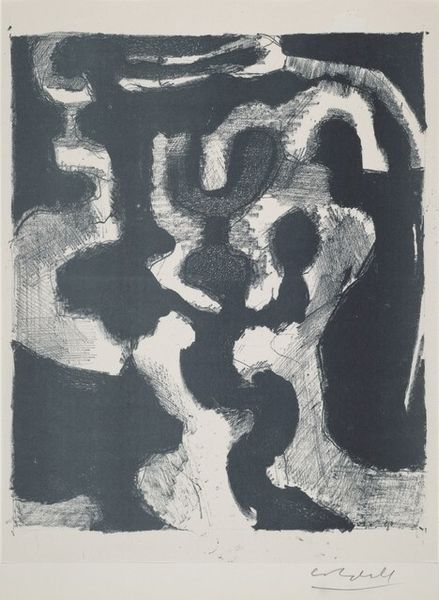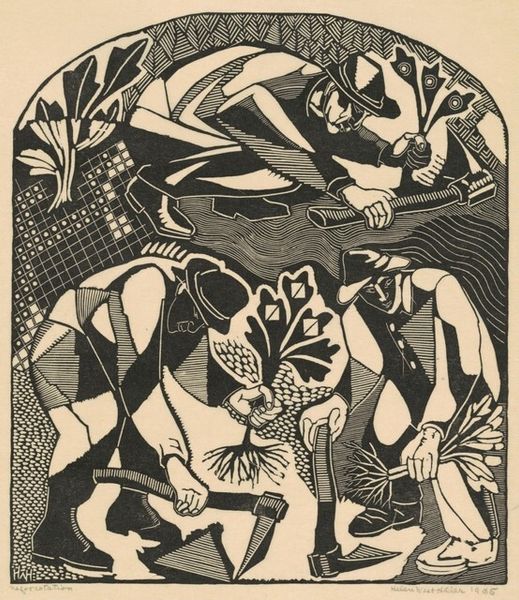
Dimensions: Image: 213 x 157 mm Sheet: 265 x 207 mm
Copyright: National Gallery of Art: CC0 1.0
Editor: This is "Harlem Nights #1," a linocut print from around 1933 by Richard A. Loederer. The stark black and white contrast gives it such a dramatic flair. I am struck by the woman dancing—what captures your attention? Curator: The method is fascinating. Linocut, typically considered a craft medium, is used to depict a sophisticated subject. This tension between material and subject is quite powerful. We must consider the cultural and socio-economic implications here. During the Harlem Renaissance, black artists sought agency in representing their lives. How does using this accessible printmaking method play into that? Editor: That’s a perspective I hadn't considered. The choice of linocut almost democratizes the image. Does this relate to ideas of consumption at the time, how accessible art was becoming? Curator: Precisely! Prints allowed for wider circulation of images and ideas, reaching a broader audience beyond elite circles. Loederer, by employing a less-esteemed material like linoleum, could be subverting traditional hierarchies. Think of the labor involved; carving the image in reverse on linoleum is physically demanding. It suggests a direct engagement with the production process. What feelings are evoked considering all this? Editor: Now that you mention the production, I imagine it as more intimate and connected to its cultural origins. So much labor goes into the imagery of supposed leisure! This is far more compelling than if it were, say, an oil painting in a gilded frame. Curator: It makes you consider the material conditions under which art is created, consumed, and valued. Are traditional artistic labels challenged as well, in your eyes? Editor: Definitely! I used to see "print" as "less than" a painting. But thinking about its production changes everything, especially the social dynamics involved in choosing those specific means. Thank you for expanding my view. Curator: And thank you for connecting it to social value, as well! It makes you ponder the complex web between artistic creation, the material world, and social narratives of the past.
Comments
No comments
Be the first to comment and join the conversation on the ultimate creative platform.

